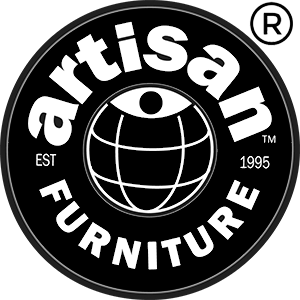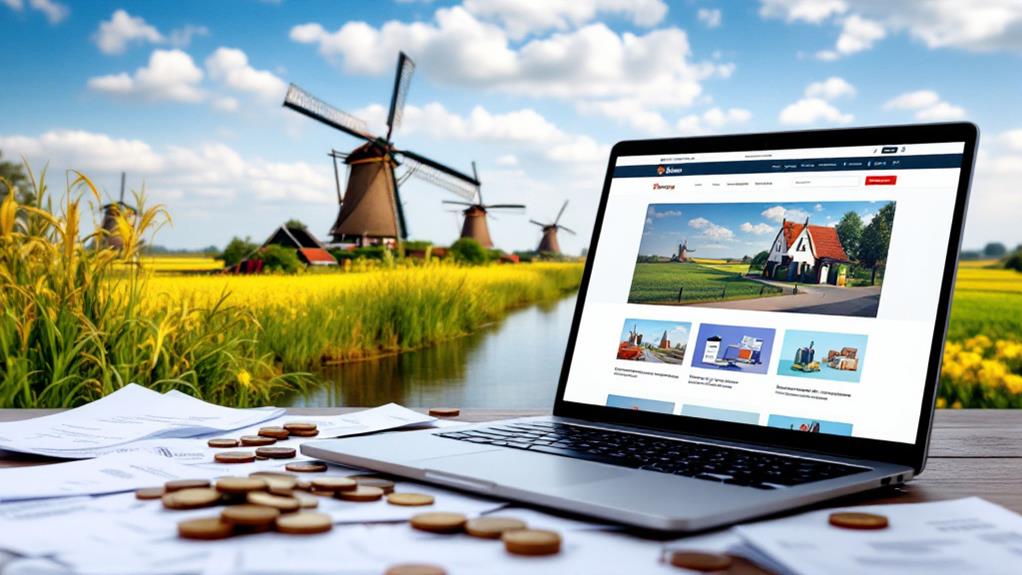When dropshipping in the Netherlands, it is crucial to manage VAT duties, income taxes, and business registration for optimal compliance. You'll need to charge Dutch VAT at 21% for local customers and register with the Dutch Tax and Customs Administration for a VAT number. Consider the OSS scheme for EU sales for streamlined reporting. Understanding progressive income tax rates can help enhance your taxable income, with several deductions available for business expenses. Registering your business with the Dutch Chamber of Commerce is necessary to legally operate. For cross-border transactions, grasping the EU VAT rules will aid. Explore the intricacies of each aspect next.
Table of Contents
ToggleUnderstanding VAT for Dropshipping
Maneuvering VAT for dropshipping in the Netherlands can be complex, but understanding its basics is fundamental for your business success. First, you must grasp what VAT, or Value Added Tax, entails. It's a consumption tax placed on goods and services at each production stage.
For dropshipping, it can become particularly intricate due to the cross-border nature of transactions. When you sell goods to Dutch customers, you're required to charge Dutch VAT, currently at 21%. This means registering for a VAT number with the Dutch Tax and Customs Administration is essential.
Additionally, because dropshipping allows businesses to focus on marketing and customer service rather than logistics, understanding tax obligations becomes even more significant.
It's important to note how VAT differs based on customer location and order destination. If your customer resides within the EU, you must comply with the EU's VAT regulations, including the One-Stop-Shop (OSS) scheme, which simplifies reporting for sellers.
However, if your buyer is outside the EU, VAT isn't typically charged. Despite this, you should remain vigilant about import duties that might apply.
Maintaining proper VAT records is crucial, documenting sales and purchases accurately. This guarantees you can reclaim any VAT paid on business expenses.
With these insights, you can navigate VAT complexities, guaranteeing compliance and optimizing business operations.
Income Tax Considerations
Managing income tax obligations is vital for any dropshipping business operating in the Netherlands. As a dropshipper, you'll need to take into account your income tax responsibilities and how they affect your business.
Income tax in the Netherlands is levied on both individuals and businesses, so understanding your tax obligations will help you avoid penalties and optimize your financial strategy.
Here are some key points to reflect on regarding income tax for your dropshipping business:
- Determine Your Taxable Income: Calculate your gross income from all sources and subtract any allowable deductions to find your taxable income.
- Understand Tax Rates: Familiarize yourself with the progressive tax rates in the Netherlands, which increase based on income brackets.
- Keep Accurate Records: Maintain detailed records of all transactions, expenses, and earnings, as accurate bookkeeping is essential for tax reporting.
- Explore Tax Deductions: Investigate possible deductions available for business expenses, such as operational costs, to reduce your taxable income.
- Utilize a Tax Professional: Consult with a tax advisor who understands Dutch tax laws to guarantee compliance and optimize your tax strategy.
Registering Your Business
One of the first steps in establishing your dropshipping business in the Netherlands is registering your business with the appropriate authorities. This process guarantees you're legally recognized, which is vital for complying with Dutch regulations. Start by determining the legal structure of your business, such as a sole proprietorship or a limited liability company. Each structure has its own tax implications and responsibilities. Next, register with the Dutch Chamber of Commerce (KvK), where you'll receive a unique KvK number. This number is essential for identifying your business in all official matters.
Additionally, you'll need to register for a VAT number with the Dutch Tax and Customs Administration. This number allows you to charge VAT on goods sold within the EU and claim back VAT on business expenses. To simplify the process, here's a quick comparison of the registration requirements for different business structures:
| Business Structure | Requirements |
|---|---|
| Sole Proprietorship | KvK registration, VAT number |
| Limited Liability Company | KvK registration, VAT number, |
| Articles of Association |
Guarantee you carefully consider the options, as each step affects your business operations and tax obligations. Proper registration sets the foundation for a compliant and successful dropshipping business in the Netherlands.
Invoicing and Record-Keeping
Efficient invoicing and meticulous record-keeping form the backbone of your dropshipping business in the Netherlands. To comply with Dutch tax requirements, you must issue invoices that meet specific standards. Each invoice needs to include essential details like your business name, VAT number, customer information, and a clear description of the goods or services sold.
Maintaining accurate records guarantees you're prepared for any tax audits and helps track your business performance.
Consider these key practices for effective invoicing and record-keeping:
- Include all mandatory details: Ascertain each invoice contains date, invoice number, and VAT information.
- Use digital tools: Employ invoicing software to automate and streamline processes, reducing errors and saving time.
- Organize systematically: Keep digital and physical records organized by date or category for easy retrieval.
- Maintain backup copies: Store duplicate records in a secure location to prevent data loss.
- Regularly review records: Conduct periodic checks to verify accuracy and completeness.
Cross-Border Tax Compliance
While you're guaranteeing your invoices are spot-on, it's also essential to understand cross-border tax compliance for your dropshipping business in the Netherlands. When selling products internationally, you must navigate complex tax regulations, including VAT, customs duties, and import taxes.
Understanding VAT is critical, as it applies to most goods sold within the European Union. If your business surpasses the VAT threshold, you'll need to register for VAT in the respective countries where you sell.
To maintain compliance, you should familiarize yourself with the VAT rates of each European country you operate in, as they can vary considerably. Additionally, when importing goods into the EU, customs declarations are mandatory, and you might be liable for import duties.
It's important to correctly classify your goods using the Harmonized System (HS) codes, guaranteeing accurate duty calculations.
Consider using an automated tax software to streamline this process, reducing errors and saving time. Keeping detailed records of all transactions is essential, as tax authorities may require proof of compliance.
Tax Optimization Strategies
To maximize your dropshipping business's profitability in the Netherlands, it's vital to implement effective tax optimization strategies. By optimizing your tax obligations, you can reduce costs and enhance your financial performance.
Start by understanding the Dutch tax system, focusing on the VAT (Value Added Tax) and income tax regulations. It's important to know which tax rates apply to your products, as this can impact your pricing strategy and profit margins.
Consider the following tax optimization strategies:
- VAT Registration: Confirm you're registered for VAT in the Netherlands, allowing you to reclaim VAT on business expenses.
- Invoicing Compliance: Maintain accurate and compliant invoices, detailing all necessary information to avoid penalties and confirm smooth audits.
- Expense Tracking: Keep detailed records of all business expenses, including shipping and supplier costs, to maximize deductions.
- Use of Tax Advisors: Consult with a tax advisor familiar with Dutch regulations to identify potential savings and confirm compliance.
- Efficient Inventory Management: Optimize your inventory turnover to reduce storage costs and improve cash flow, which can impact taxable income.
Implementing these strategies can help you achieve a more favorable tax position, enhancing your dropshipping business's competitiveness in the market.
Frequently Asked Questions
What Are the Common Tax Deductions Available for Dropshipping Businesses in the Netherlands?
When you're running a dropshipping business, you'll find common tax deductions include expenses for advertising, shipping, and office supplies. Don't forget to keep records of all your business transactions to maximize your eligible deductions.
How Do I Handle Returns and Refunds Concerning VAT in Dropshipping?
You'll handle returns and refunds by adjusting your VAT return accordingly. Deduct the VAT originally paid on the returned item from your VAT due. Ascertain accurate records to reflect changes and maintain compliance with tax regulations.
Are There Any Specific Tax Implications for Using Third-Party Fulfillment Centers in the Netherlands?
When using third-party fulfillment centers, you need to take into account VAT implications. Make certain the fulfillment center complies with Dutch VAT rules. Keep accurate records and track inventory movements to avoid potential tax issues and guarantee smooth operations.
How Does the EU One-Stop-Shop (Oss) Scheme Affect My Dropshipping Taxes?
The EU One-Stop-Shop (OSS) simplifies your VAT obligations by allowing you to report and pay VAT for all EU sales in one place. You won't have to register for VAT in each member state.
What Tax Implications Arise From Selling Digital Products Through Dropshipping in the Netherlands?
When selling digital products, you must consider VAT implications. You're required to charge VAT based on the buyer's location. Register for the EU OSS scheme to simplify VAT reporting across different EU countries, including the Netherlands.


